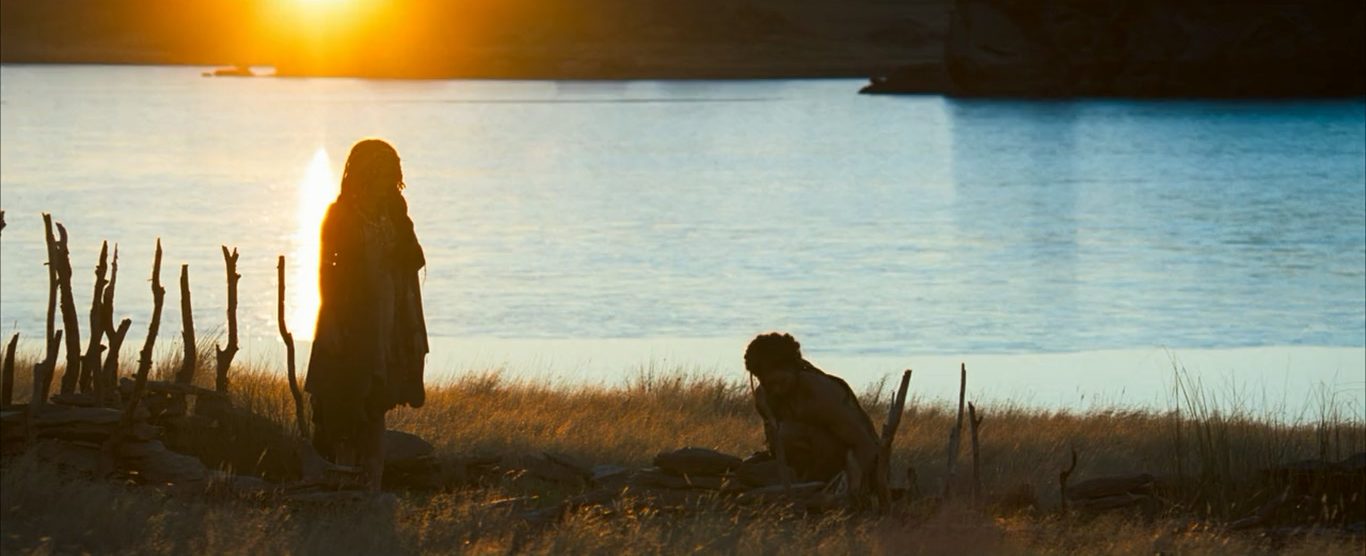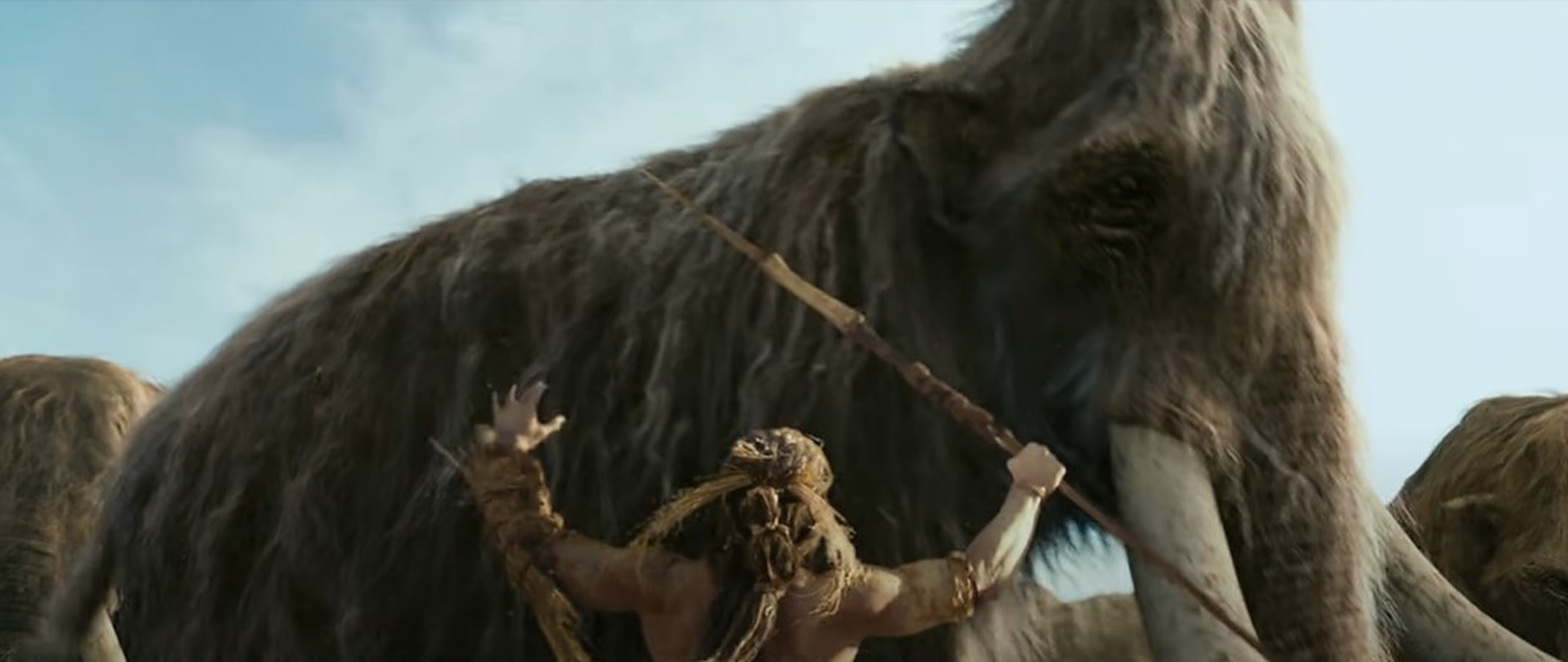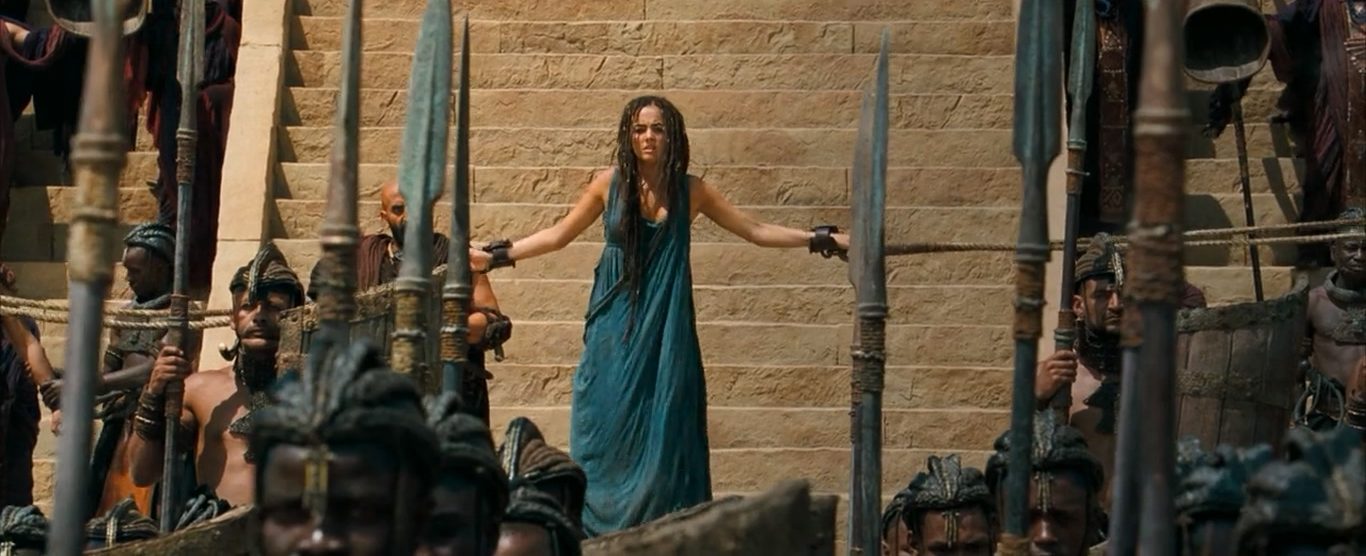Was Christ born 10,000 years before the date mentioned in the scriptures? If this question has bugged you for an eternity, you may get some food for thought from Roland Emmerich’s 2008 epic historical action movie ‘10,000 BC.’ The narrative plunges the audiences into the moors of an olden world, chronicling a mythical tale of the mammoth-hunting Yagahl tribe and their path of glory. D’Leh, the protagonist of the movie, assails a woolly mammoth, obtaining the White Spear in return. However, he is unsure whether he can yield the weapon until the time demands his leadership.
After mobilizing the surrounding clans and tribes, D’Leh must wage war against the gods and get back his wife, Evolet. The 2008 movie was bashed in the media by people trying to make sense of it. At its core, ‘10,000 BC’ is silly fun with some anachronisms thrown in the middle. Nonetheless, you must wonder whether there is an ounce of truth in the narrative, and in that case, allow us to probe more profound and separate myth from history.
Is 10,000 BC a True Story?
No,’ 10,000 BC’ is not based on a true story. You would know the narrative does not hold even one ounce of truth right off the bat, at least historically. But the mythical trope of a guy getting back his girl from a group of thugs (or demigods) is attested in cultures worldwide. Therefore, the film is not as out of place as it seems at first glance, although it cannot do away with amusing over-mystification. German director Roland Emmerich (‘The Patriot,’ ‘The Day After Tomorrow’) directed the movie from a screenplay penned by him and Harald Kloser.

For devising the script, Emmerich did not rely on the historiography of the ancient times but on fictional artifacts from culture. The ‘Conan the Barbarian’ stories penned by Robert E. Howard influenced him greatly. As the writer of a diverse range of pulp fiction, the author was celebrated in middle-class households, but his work was rarely a subject of critical discussion. Another major inspiration for the director was ‘Quest for Fire’ the 1981 prehistoric action-adventure movie by Jean Jacques Annaud.
However, Emmerich’s primary source of inspiration came from watching a Discovery Channel Special documentary about woolly mammoths, which made him start work on developing CGI prototypes of the creature. Furthermore, his childhood experience visiting the Pyramids of Giza fueled him to explore Egyptian culture in his cinematic work. Not just that, Emmerich borrowed some aspects from ‘Fingerprints of the Gods,’ a controversial 1995 pseudoarcheology book by Graham Hancock. He then convinced Harald Kloser, the famed Austrian film composer, to write the screenplay.
The director knew Kloser from their work in ‘The Day After Tomorrow,’ and he liked some of the composer’s suggestions. The project had been in the talks since October 2005, when Roland Emmerich opened casting sessions. He wanted to cast lesser-known figures from the industry to keep the timeless feel of the narrative. People may have shunned the film for its historical inaccuracies, but they ought to remember how it is a work of fiction.

Moreover, Emmerich scrapped the idea of using an archaic language like ‘Apocalypto’ or ‘The Passion of the Christ.’ For him, the old English would not be engaging enough for the audience. Although it may look odd in the first place that an English-speaking clan lives in the far-flung Ural Mountains, the director devised the screenplay in a way it could reach the masses. The languages used in the movie, as well as the tribes, are fictional.
To create the languages – around half a dozen in total, the director hired dialect coach Brendan Gunn. Steven Strait improvised to an extent with the languages, spicing up the narrative with some actual African languages and dialects, including the Oshiwambo language native to the Namibian people. In its crux, ‘10,000 BC’ attempts to lift the veil of mystery on how pyramids were made. For a long time, there has been worldwide speculation regarding the construction of these giant artificial mountains. People have proposed several theories, ranging from authoritarian regimes to the involvement of aliens.
Though we now know that woolly mammoths (or Mannaks in the filming narrative) lived longer than previously believed, it is possible that they may have survived thousands of years after the speculated time of their extinction. Therefore, despite the absence of realism in ‘10000 BC,’ it is still a rich cinematic experience, especially as we do not have many references to the old times.
Read More: 10,000 BC Ending, Explained


You must be logged in to post a comment.